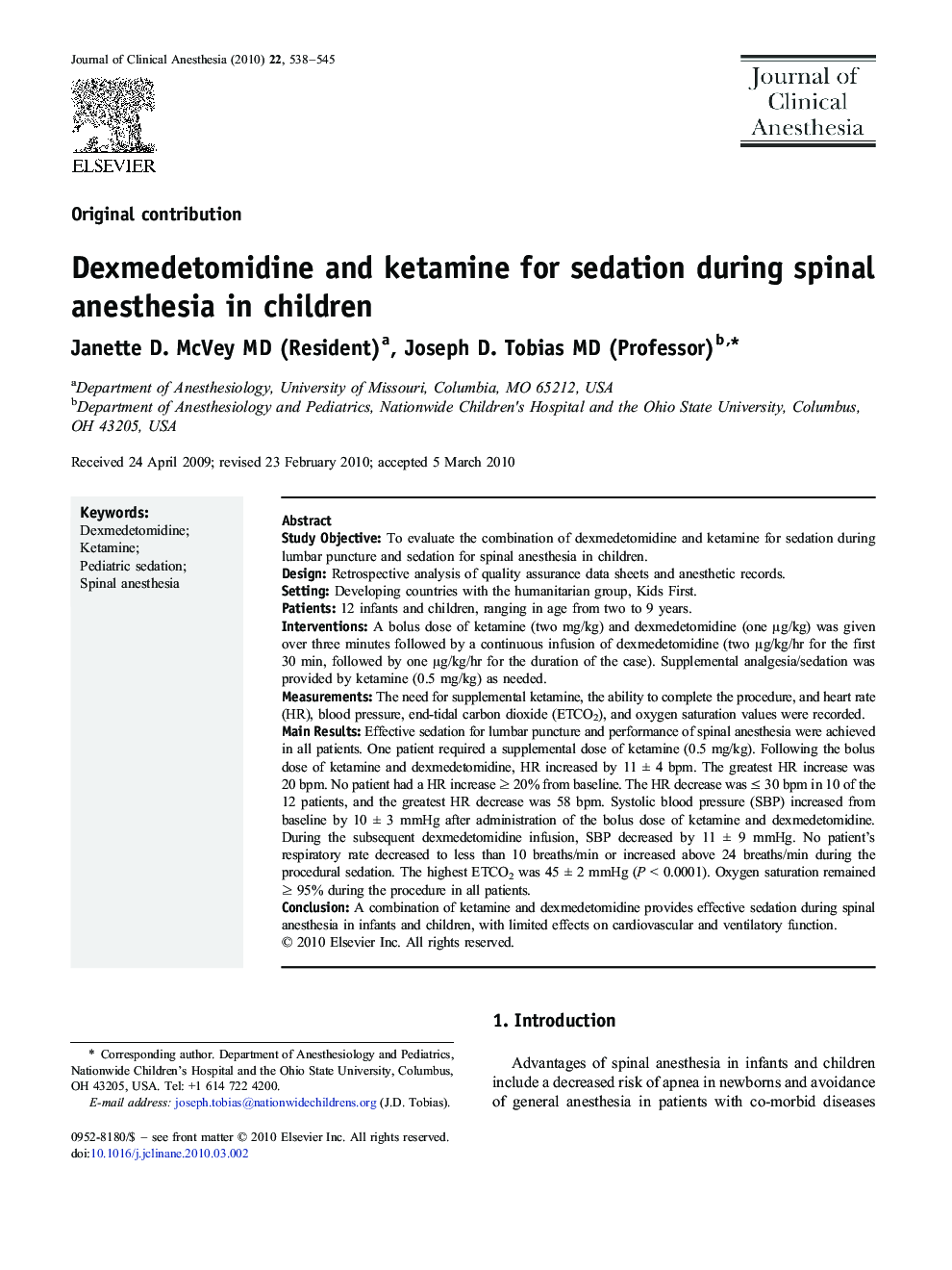| کد مقاله | کد نشریه | سال انتشار | مقاله انگلیسی | نسخه تمام متن |
|---|---|---|---|---|
| 2762941 | 1150733 | 2010 | 8 صفحه PDF | دانلود رایگان |

Study ObjectiveTo evaluate the combination of dexmedetomidine and ketamine for sedation during lumbar puncture and sedation for spinal anesthesia in children.DesignRetrospective analysis of quality assurance data sheets and anesthetic records.SettingDeveloping countries with the humanitarian group, Kids First.Patients12 infants and children, ranging in age from two to 9 years.InterventionsA bolus dose of ketamine (two mg/kg) and dexmedetomidine (one μg/kg) was given over three minutes followed by a continuous infusion of dexmedetomidine (two μg/kg/hr for the first 30 min, followed by one μg/kg/hr for the duration of the case). Supplemental analgesia/sedation was provided by ketamine (0.5 mg/kg) as needed.MeasurementsThe need for supplemental ketamine, the ability to complete the procedure, and heart rate (HR), blood pressure, end-tidal carbon dioxide (ETCO2), and oxygen saturation values were recorded.Main ResultsEffective sedation for lumbar puncture and performance of spinal anesthesia were achieved in all patients. One patient required a supplemental dose of ketamine (0.5 mg/kg). Following the bolus dose of ketamine and dexmedetomidine, HR increased by 11 ± 4 bpm. The greatest HR increase was 20 bpm. No patient had a HR increase ≥ 20% from baseline. The HR decrease was ≤ 30 bpm in 10 of the 12 patients, and the greatest HR decrease was 58 bpm. Systolic blood pressure (SBP) increased from baseline by 10 ± 3 mmHg after administration of the bolus dose of ketamine and dexmedetomidine. During the subsequent dexmedetomidine infusion, SBP decreased by 11 ± 9 mmHg. No patient's respiratory rate decreased to less than 10 breaths/min or increased above 24 breaths/min during the procedural sedation. The highest ETCO2 was 45 ± 2 mmHg (P < 0.0001). Oxygen saturation remained ≥ 95% during the procedure in all patients.ConclusionA combination of ketamine and dexmedetomidine provides effective sedation during spinal anesthesia in infants and children, with limited effects on cardiovascular and ventilatory function.
Journal: Journal of Clinical Anesthesia - Volume 22, Issue 7, November 2010, Pages 538–545